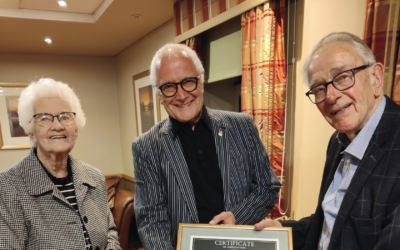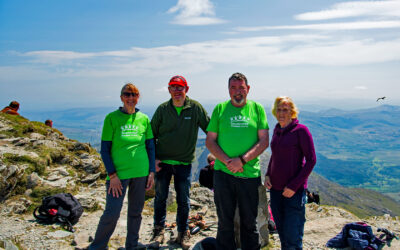Tell us about your own journey into Rotary. When did you join and what inspired you to do so?
Back in 1993, I was working at the Northern Bank in Newtownards, County Down when one of the customers came in and asked me at the counter if I would be interested in joining a new Rotary club which was forming nearby in my hometown of Donaghadee. I decided to go along and the rest is history…
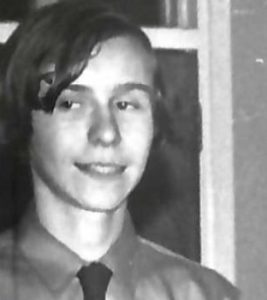

A young Garth Arnold in his days as a scout.
My interest in volunteering links back to my time in Cubs, Scouts and Venture Scouts – some of you may remember ‘Bob-a-Job Week’.
I also remember over 45 years ago being present at The New University of Ulster, Coleraine as a youth representative to meet Her Late Majesty Queen Elizabeth II and His Royal Highness the Duke of Edinburgh as a newly invested Queen’s Scout.
Looking back, this period of my life laid the foundation for me to further my keen interest in volunteering and giving something back.
You’re a member of Donaghadee Rotary in Northern Ireland, tell us more about the club and what you’ve got involved with?
Donaghadee Rotary Club was chartered way back in February 1994 – nearly 30 years ago – and having met at various locations we’re now nicely situated back in the town by the harbour.
We’re a modest club in size, but we’ve been extremely active and in the local community for many years you would have seen us outside the local Co-op with our caravan offering the blood pressure testing campaigns.
What has been your favourite memory or stand out moment of your time in Rotary so far?
Taking 26 young leaders to the European Parliament in Strasbourg for an annual event called Euro Scholar.
Within the district we ran our Youth Leadership programme which, at its peak, had maybe 2000 students coming forward for interviews.
The students were given questions by the EU office to debate, last year’s being to do with cyber-crime and this year’s to do with the environment. Students debated these in the arena filled with European Parliament members. The programme is very good for the leadership and presentation skills that they get out of it.
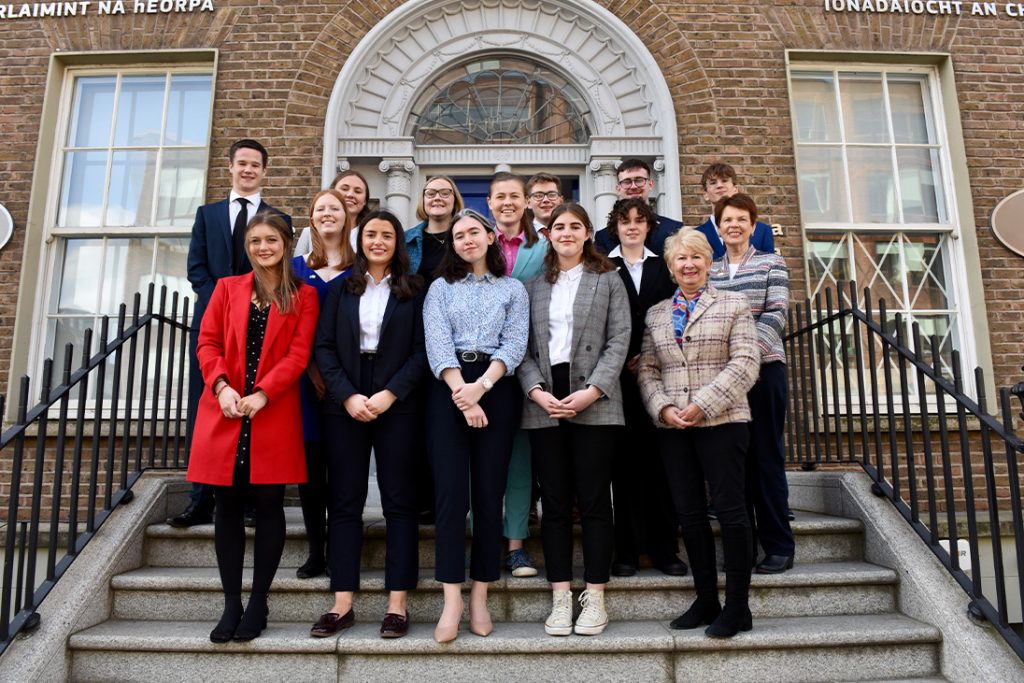

The participants of the Euro Scholar programme outside the European Parliament in Strasbourg
Could you tell us more about the new Rotary GB&I Board and why it has been introduced?
It’s a newly formed governing body looking at setting up short, medium and long-term strategies in line with Rotary International’s strategic objectives and our own Rotary GB&I Action Plan, which involves Increasing our Impact, Expanding our Reach, Enhancing Participant Engagement, and Increasing our Ability to Adapt.
With these four pillars in place, clubs basically have their strategic plan done for them, so when they feel like they need guidance for future activities there is a strategy for choosing them already there.
How is this different to previous iterations of Rotary’s structure?
Under the previous governance models, we had a Rotary GB&I President and then we had a Governing Council of 25 members made up of a District Governor from each of the districts who met up formally on a quarterly basis.
With all the different views from people coming in every time, it was getting harder to try and work out what the overall strategy would be for each year.
The objective of the new governance structure is to streamline things, take an extra layer out and give some extra time back to the districts to spend more time with their clubs.
This will allow the new governing body to set the strategy with a smaller group where anyone within Rotary GB&I can be elected to a position on the Board and not just District Governors. Members of the Board have to meet skill-based requirements, rather than having previously holding certain roles within the organisation. I’m really excited about the diversity of thought and experience this is bringing to the table.
What has the focus of the Board been in the first few months?
The first thing we did was work out our goals: membership growth, enhancing the membership experience, financial sustainability, and process efficiency. These goals work in tandem with the strategic objectives outlined earlier.
From those goals, we’ve created six workstreams based on the previously mentioned goals, as well workstreams looking at communications and regionalisation.
Each workstream has been assigned a lead to monitor its progress and, by the time this interview goes out, we will have had our first face-to-face board meeting where each of the workstream leads will present their findings and the Board will then decide how we want to move forward.
The objective of the new governance structure is to streamline things, take an extra layer out and give some extra time back to the districts to spend more time with their clubs.”
What impact do you think the Board’s activities have at a club level?
What we want to achieve is getting closer to the clubs in order to have more interaction and discussion. We want to be able to free up some more time for the district continuity groups to work with initiatives and things that they want to do.
Our aim is for the conversations to be going more directly between the Board and the club members, rather than having to go through the districts all the time. In 2023, we’re hoping to roll out some focus groups to provide the opportunity for the club members to come and meet members of the Board to begin creating that two-way communication.
In any organisation, if you get a new CEO or any new member of the senior team, everybody wants to know what’s happening so I think any opportunities for the Board to have conversations with club members would be really good.
When you have those conversations, what kind of things are you looking to hear back from clubs on?
Crucially, we want to get a picture of their membership experience and how we can make it better. Whether that is feedback on the communications they receive, the resources we’re making available or what additional support they need to grow and diversify their clubs.
It’s important that this kind of feedback goes both ways.
What role do you think the Board has in communicating externally outside Rotary?
Previously, I think there would have been a bit of concern internally in trying to work with other community or voluntary organisations as we could technically see them as competitors.
However, over the last couple of years we have found that we need some of these other organisations as bridges for us to get recognised in communities or even in the press. My mind immediately goes to the recent work we have done with Carers UK and the Together Coalition as well as the brilliant Volunteer Expo, which showed the amazing opportunities that come from collaborating with other voluntary organisations.
I think the creation of the Board will allow Rotary to put some time and effort into working collaboratively with external organisations, because the bottom line is that we’re a member organisation and we need new ways of attracting members.
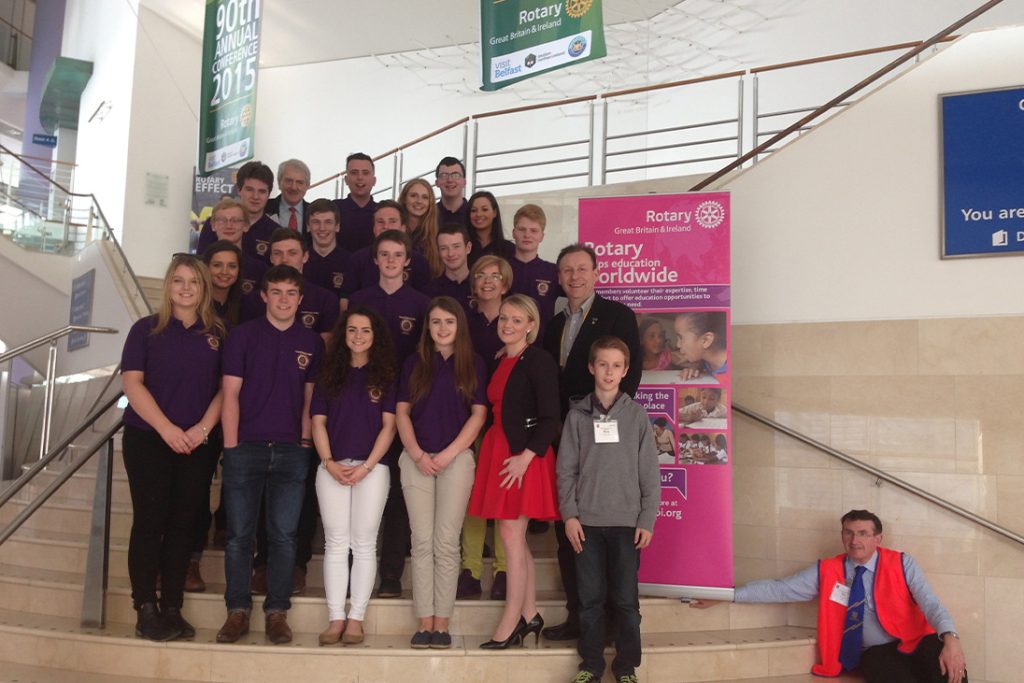

Garth Arnold at the Belfast Waterfront Conference Centre for the 2015 Rotary Great Britain and Ireland Conference.
Where do you see Rotary in 5 years’ time?
Stronger, leaner, and probably a lot more focused than we have been. We know that the membership numbers have been falling and the changes the new governing body are putting in place are great steps towards solving that, but there is more work to do.
Our direct membership model, and the Rotary Global Hub, is going from strength to strength. It was celebrated as the fastest-growing Rotary group in the world at this year’s Rotary International Convention in Houston. We’re working towards seeing membership growth over the coming years.
What will it take to make the changes you want to see in that period?
I think we need to make slight changes in what we are offering. What we need to be saying is that we’re not a voluntary organisation, we’re a membership organisation where you can come and do voluntary work.
There are clubs out there doing great things already and it’s going to be hard for them to change the way of doing things that they’ve been used to. I think we need to find a balance of supporting those clubs whilst also looking at ways of creating new ones.
We need to be able to sell the benefits of being a member of Rotary. I can remember when I joined and there were all these things available around leadership, personal development and networking with others. There’s so much good development material available and we need to be promoting it properly.
The main thing people will be asking is what the benefits to them of being a member of Rotary are to them and, hopefully, the changes we’re trying to make should give them a sufficient answer while making Rotary better for everybody.








